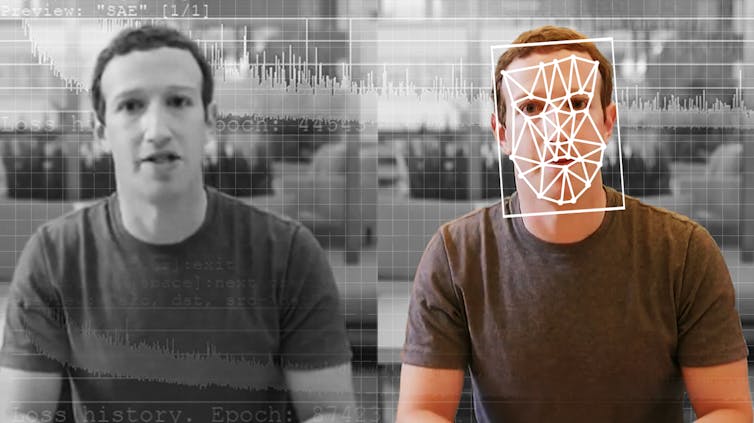The world is dealing with an unprecedented health crisis caused by a new virus. With new insights in the way COVID19 spreads, in the way the virus behaves and in the way to deal with the pandemic every day, it is now more important than ever to safeguard the information we share is accurate and fact-based. We have to inoculate ourselves against the fake news and misinformation that infect our newsfeeds and timelines at this crucial moment by fact-checking.*
This inoculation against misinformation is a special US election edition, put together by Ellen McCutchan, RMIT ABC Fact Check, touching on as many false coronavirus claims from both presidential candidates that could fit into this article – from the first uses of the word “pandemic” to the politically charged hydroxychloroquine debate – and weighed the facts around voting by mail.
Donald Trump’s most egregious false coronavirus claims

Reuters: Tom Brenner
Since assuming office in January 2017, US President Donald Trump has served up more than 22,000 false claims, according to the Washington Post Fact Checker, of which more than 13,000 have been related to the coronavirus pandemic.
Fact Checker uses a system of “Pinocchios” by which to judge claims – the more Pinocchios a claim is awarded, the less factual it is considered.
So, which of Mr Trump’s coronavirus claims have been deemed his biggest whoppers?
While Fact Checker usually caps the number of Pinocchios it awards to four, in cases where a false statement is repeated more than 20 times “bottomless” Pinocchios come into play, as is the case with Mr Trump’s claim (repeated 42 times) that hydroxychloroquine is a cure for COVID-19.”On June 15, [the Food and Drug Administration] withdrew its emergency use authorisation for hydroxychloroquine, concluding that it ‘is no longer reasonable to believe’ that hydroxychloroquine and chloroquine are effective in treating the disease,” the Post noted.
A claim that former President Barack Obama left behind no ventilators when he left office was awarded bottomless Pinocchios by the Post team – in fact, 16,600 working ventilators were part of the national stockpile of healthcare equipment when Mr Trump became president.
Another suggestion from Mr Trump that the Obama administration left the US unprepared for a pandemic due to “red tape” and regulations which slowed efforts to roll out testing was awarded four Pinocchios, as were comments about Mr Obama’s handling of the 2009 outbreak of swine flu.
Also earning the Post’s four Pinocchio rating was a claim – repeated 12 times in various guises by Mr Trump – that the wall being built on the Mexico border had prevented a larger outbreak of COVID-19 in the US.
“Public health experts said [the wall] made no difference because travellers from China and Europe brought the virus to the United States and it spread over following months due to lax and inconsistent public health measures inside the country,” the fact-checkers said.
Some of Joe Biden’s coronavirus claims were wide of the mark also

Reuters: Brian Snyder
While Mr Trump’s false coronavirus claims may number in the thousands, his opponent hasn’t been immune from spreading a few falsehoods of his own.
Fact checkers at PolitiFact found, for instance, that despite a claim from Democratic challenger Joe Biden to the contrary, Mr Trump could not have prevented every COVID-19 death in the US had he “done his job from the beginning”.
“A more robust handling of the pandemic would likely have seen the country’s death count significantly reduced, but not to zero,” public health experts told PolitiFact.
The publication also found Mr Biden had exaggerated remarks made by Mr Trump in regards to curing COVID-19. While Mr Biden claimed Mr Trump had told Americans infected with the virus they “may be OK” if they drank bleach, the fact -heckers reported that the President was less explicit in his suggestion.
“Trump did not specifically recommend ingesting disinfectants, but he did express interest in exploring whether disinfectants could be applied to the site of a coronavirus infection inside the body, such as the lungs,” they reported.
FactCheck.org, meanwhile, delved into the archives in order to revisit Mr Biden’s early statements on the coronavirus pandemic.
In one example, the fact-checkers found that a claim made by Mr Biden in September, that he had labelled the coronavirus crisis a pandemic as early as January, was an exaggeration of a warning he issued that the virus could turn into a pandemic.
According to FactCheck.org, Mr Biden also exaggerated how early he had taken a stance on the use of face masks to curb the spread of the virus.
“We couldn’t find any instances of Biden ‘all the way back in March … calling for the need for us to have masks’, as he claimed.”
Finally, the fact-checkers found that a claim made by Mr Biden during the Democratic National Convention that the US response to the pandemic was “by far the worst performance of any nation on Earth” was missing context. Using figures available at the time of the claim in August, FactCheck.org concluded that while Mr Biden’s claim was “true based on the raw totals of COVID-19 cases and deaths, the US is not the worst when adjusted for population or on other metrics”.
The facts on mail-in voting

AP: Rich Pedroncelli
Elections in the midst of a global pandemic are a fraught exercise, perhaps especially in the US, where the notion of swathes of voters attending polling stations while the country records more than 60,000 new daily cases of COVID-19 seems downright dangerous.
Voting by mail might seem like an obvious solution, but for many states it’s not that clear cut.
Some states, such as Arizona, will allow anyone to vote by mail, should they request to do so. Others, including California, have sent a mail-in ballot to all registered voters, regardless of whether they requested one. In states like Indiana, however, voters must provide a reason, such as illness, as to why they can’t make it to the polling booth on election day, while in Wisconsin, a witness is required for voters marking their mail-in ballot.
With up to 50 per cent of votes expected to be cast by mail in next week’s election, Mr Trump has, throughout his campaign, issued a steady stream of claims as to the validity and security of such voting. But what do the fact checkers say?
Back in September, FactCheck.org compiled a list of Mr Trump’s repeated false claims about mail-in voting.
They ruled as false a claim that “millions of mail-in ballots will be printed by foreign countries” leading to a “rigged” election, given the “numerous logistical hurdles”, such as bar codes and signature checks, that would need to be jumped in order to get large numbers of fake ballots past the scrutiny of election officials.
“After [FactCheck.org’s] story, US intelligence officials in a background briefing with reporters said they have not seen any foreign attempts to counterfeit mail-in ballots,” the fact checkers said.
Another Trump claim, that the Democratic Party had sent out 80 million unsolicited ballots in order to “harvest” votes, was likewise found to be false.
“Mail ballots will be sent automatically to eligible registered voters in only nine states and the District of Columbia,” FactCheck.org said. “That’s about 44 million ballots – not 80 million – and they will be going to Republicans as well as Democrats and independents.”
More recently, a tweet from Mr Trump claiming there had been “big problems and discrepancies with mail-in ballots all over the US” was this week labelled by Twitter as containing “disputed” content which may be “misleading”.
“While mail-in ballots have proved to be secure and are already used broadly in several states, the President has issued false and misleading information about the process,” Politico reported, in reference to the label.
Meanwhile, a Facebook post claiming Mr Trump had already voted twice in the election was deemed false by PolitiFact.
“Trump voted in person at a library in Palm Beach County Oct. 24,” the fact checkers said. “The Supervisor of Elections said he did not vote twice in the general election.”

compiled by gaming website Polygon
*The facts in this article are derived from the Australian RMIT ABC Fact-check newsletters which in turn draw on their own resources and those of their colleagues within the International Fact-Checking Network (IFCN), of which RMIT ABC Fact-check is a member.



















